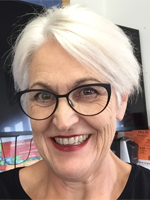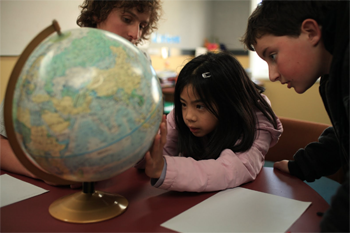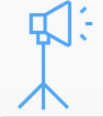Dr Wendy Kofoed is the principal of Newmarket School in Auckland. In this blog, the second of a two part series, Wendy shares some of the highlights of her recent sabbatical, identifying innovative inquiries to transform curriculum design and teaching practice.
Hacks, nudges, and inquiries
Given the number eight wire mentality of New Zealanders, it was not surprising that many rich examples of innovative inquiry or hacks by educators were identified in my data collection.
Some examples of these hacks, nudges, and inquiries included:
Utilising Te Whāriki with The New Zealand Curriculum
- Future focused concept: Students learning needs, interests, and capacity determine the pace of the learning
In one primary school it was identified that programmes were not recognising the interest of students. So teachers of children in a junior team recognised the need to support student learning in a more developmentally appropriate way. Teachers decided to balance teacher-directed activities and child-directed activities drawing on Te Whāriki (2017) (the revised early childhood curriculum). The teachers in this school hacked traditional structures to design a new play-based learning model. In doing this they learned to continually observe and reflect on the play of the students and when appropriate, introduced provocations drawing on their curriculum knowledge and the key competencies, values, and principles of The New Zealand Curriculum. Leaders in this school learned with the teachers, and provided time for teachers to develop their understanding of the change. They worked with teachers to evaluate aspects that were successful, the barriers to implementation, and where necessary reflected on and adapted reporting and assessment requirements.
Re-thinking traditional ability grouping
- Future focused concept: Students owning and driving their own learning to build an inclusive learning environment
Teachers and leaders of children in a senior primary team recognised that in their school student learning was underpinned by negative messages about students’ capacity to achieve. They recognised that no matter how successful they were in developing strong relationships with students, many students absorbed messages about their ability to learn through long-held classroom structures and systems.
The teachers in this school hacked traditional structures to rethink their traditional classroom ability grouping systems. In doing so, they incorporated digital platforms. Rethinking how learners come together and how learners are grouped also strengthened their understanding of learner agency in learning spaces. A strong feature of this hack was the time taken to structure the change process and the ongoing collaborative problem solving of teachers and leaders.
Student agency to develop curriculum
- Future focused concept: Rethinking learner and teacher roles
Leaders in a intermediate school recognised that traditional ways of organising curriculum topics left little room for student involvement or ownership of learning. They wanted their students to develop the democratic capabilities of questioning and challenged making real decisions to collectively solve problems. They recognised that the traditional ways they used learning content and discipline specific topic studies did not put learners at the centre in their school’s curriculum design. In addition, their hunch was that with greater learner ownership of curriculum there would be greater learner activity, motivation, and "buzz". So, a curriculum design team of student leaders were given the opportunity, and were very successful, in planning the provocations and teaching content for the whole school. Teachers agreed that this pedagogical approach elevated student ownership of inquiry and a focus on concepts that drove interdisciplinary learning.
A global learning environment
- Future focused concept: Students and teachers developing new kinds of relationships and partnerships
A group of leaders recognised that by engaging in global projects themselves, they would build their capability to provide rich and relevant opportunities for learning for students. Leaders challenged each other to collaborate and to learn with diverse peers, globally. They wanted to gain pedagogical knowledge and skills in a particular area outside of traditional leadership learning, and to utilise sophisticated information systems.
They came together collaboratively in a digital environment to work on a problem of leadership. This involved developing the skills and knowledge to work in a global digital environment on a challenging inquiry project. Of note, this group of leaders utilised a non-school or university learning environment, and their learning was highly visible to their staff. It reflected current and future possibilities for their teachers’ learning. It involved the use of technology, transforming the idea of a teaching and learning space. In time it led to their support of teachers utilising this form of global interaction to enhance learning in classrooms.
Leaders collaborative learning
- Future focused concept: Students and teachers using the advantage of technology to build new kinds of partnerships and relationships
Leaders recognised strength in working together on a challenging problem of practice to deepen learning and make links and pathways across their schools. A small group of leaders worked together face-to face on a complex, and difficult, common problem of practice that was evident in each of their schools (introduction of robotics, coding, and a digital curriculum). This group utilised their strong common cultural backgrounds as a strength to support each other. They utilised a dominant strategy of reflection and evaluative thinking when working together. They were clear on sharing what they expected from the change, and in getting support when they needed to understand something better. They provided strong feedback to each other as part of this learning process. While they had diverse educator views and practice, the strength of their cultural ties and backgrounds helped them negotiate any challenges in their learning. A strong use of evidence and diverse evaluation and assessment processes helped strengthen their common learning.
So what?
The work of futurist educators who are hacking their learning and innovatively designing curriculum provide other leaders with examples and opportunities to think about and start experimenting with the curriculum in their schools. They help us gain an understanding of ways of designing curriculum in our schools that are supportive of growing the system as a whole. This creativity will continue to shift the way the system "works" and how it "knows". It will open the door for opportunities for traditional ways of working to be reworked, re-energised, and in doing so build our resilience and capacity for innovation.
An implication raised from the focus on student agency is that some schools are rethinking student and teacher roles in order to create a knowledge building environment where all work together. Traditionally school learners themselves have had little opportunity to shape the curriculum. Given that student perspectives of curriculum are just as relevant as anyone else's, opening possibilities amongst groups previously not given a voice is exciting.
Spirals of inquiry, or the less formal hacks or nudges, encourage experimentation and learning at all levels of a school to flourish. Particularly if teachers and leaders of the organisation take ownership of their own learning, and when the organisation is not risk averse. Important in these complex and challenging times is the need to reduce any expectations or artificial complexity of inquiry. As we do so, we open up new possibilities for the future of curriculum design in our schools. As Paulo Freire (1994) said:
"As beings programmed for learning and who need tomorrow as fish need water, men and women become robbed beings if they are denied their condition of participants in the production of tomorrow. Every tomorrow, however, that is thought about, and for whose realisation there is a struggle, necessarily implies dreaming and utopia. There is no tomorrow without a project, without a dream, without utopia, without hope, without creative work, and work towards the development of possibilities, which can make the concretisation of that tomorrow viable."
And finally
For leaders, channelling thought into action is hard but necessary work, especially in our complex school environments. As a school leader I understand that the curriculum encourages students to look to the future by exploring such significant future focused issues as sustainability, citizenship, enterprise, and globalisation. More importantly I want our students to be future-oriented and adaptable, adopting a more complex view of knowledge that incorporates knowing, doing, and being. Alongside this, as a leader I need to rethink how curriculum design is organised, resourced, and supported. Working globally on future focused learning is new and exciting, albeit challenging to implement. Let’s start hacking!
- Read Wendy’s full sabbatical report here.
Guiding questions Ngā pātai ārahi
- Which of the above future focused concepts resonates with you?
- How much input do students at your school have in shaping the curriculum?
In her first blog, Wendy shares some of the highlights of her sabbatical where she explores what a future focused curriculum might look like.
Have you seen?
Future focus spotlight
Our future focus spotlight looks at the future focus principle, helping you design a curriculum around significant future-focused issues such as sustainability, citizenship, enterprise, and globalisation. Find short videos, group activities, and opportunities for personal reflection.




